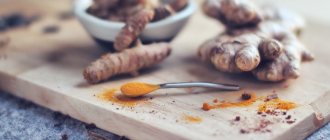Food
August 22, 2019
text: My Handbook
Everyone is talking about matcha latte, from your close friends and healthy lifestyle followers to bloggers and world celebrities. For example, Gwyneth Paltrow said in an interview that she decided to give up coffee and switched to a tonic analogue with almond milk. Since then, everyone wants to know the recipe for the matcha latte that this enterprising blonde drinks.
Over the past few years, Japanese matcha tea has become incredibly popular all over the world, and with it matcha latte - a beautiful milk drink with thick foam and a light, characteristic tartness of taste. Now you can order matcha latte in any coffee shop in the capital, but you can also prepare it yourself.
This is a truly delicious and healthy alternative to coffee, and is also extremely rich in antioxidants. To make sure of this, we offer three easy ways to prepare the trendy drink.
Iced matcha latte
What you need for 1 serving:
- teaspoon matcha tea powder
- tablespoon honey
- glass of plant milk (almond, coconut)
What to do:
Place a large juice glass in the freezer for half an hour. Meanwhile, combine matcha tea powder, honey and milk in a blender. Pour into a chilled glass, add a couple of ice cubes and serve immediately.
Contraindications
If a person is lactose intolerant, you can switch to plant-based dairy products if you want to consume such drinks.
There's a lot of caffeine here, so caution is a good idea:
- for children under 12 years old;
- pregnant and nursing mothers;
- for chronic gastrointestinal diseases;
- if you take antidepressants and tranquilizers, antidiabetic drugs.
Important! Do not drink these drinks on empty stomachs, otherwise you will feel sick. And they should not be used by people who have iron deficiency anemia.
Classic matcha latte
What you need for 1 serving:
- 1 teaspoon matcha tea powder
- 1/3 cup water
- 1 1/4 cups milk (cow's or plant-based)
- honey or sugar to taste
What to do:
To make a classic matcha latte, first prepare the tea by whisking matcha powder with water. Heat the water to 80 degrees Celsius, but do not bring it to a boil, otherwise the tea will turn out bitter and not so tasty.
For every teaspoon of powder, take about 1/3 cup of hot water and whisk the powder with a bamboo whisk until there are no lumps. If you don't have special tools, use a whisk or even a regular spoon.
Heat the milk and froth it into milk froth. Pour the prepared matcha tea into the milk in a thin stream; you can add sugar or honey to taste.
How is matcha tea produced?
Leaves for matcha tea are harvested only once a year, and a month before harvesting, the tea bushes are shaded to protect them from direct sunlight. Thanks to this, the leaves become softer and juicier, and excess bitterness disappears from them. Tea from such leaves turns out sweeter and more tender, and its composition increases the content of amino acids. This is tea of the first gradation (highest grade). It is obtained from dried young and tender tea leaves without veins and stems, ground into powder in stone millstones. Matcha is a rich source of antioxidants and polyphenols. One cup of matcha tea has the nutritional benefits of ten cups of brewed green tea.
shutterstock.com
How to choose matcha tea
The main thing is the color, bright green or the color of young grass. The brighter the color of the tea, the more elite it is, with a delicate taste and creamy aftertaste. You can even catch notes of raspberry leaf in the aroma of this tea powder. The lower the grade, the duller the color, with swampy shades. This tea has a more astringent and bitter taste (typical of Chinese matcha tea).
If you buy tea in a package, it should be airtight. If you buy tea not in sealed packaging, but in pre-packaged packaging, you need to know everything about the supplier, who must provide certificates for the products and transport the tea directly from Japan. And you should know that the tea from the supplier is fresh: this is important and is reflected in the taste.
shutterstock.com
Matcha tea: how to store
It should be stored in a tight container in a dark place and limit the flow of oxygen. Can be in the refrigerator: the lower the temperature, the better.
What kind of milk to prepare matcha tea with?
Matcha tea does not go well with very full-fat milk, such as farm milk. The taste and fat content of milk interrupts the herbaceous delicate taste of tea. Matcha goes well with alternative milk: sweet almond or coconut. You can diversify the taste by adding spices, zest, and fruit. Taboo is the use of unnatural syrups with a strong chemical taste in drinks, which spoil the drink.
shutterstock.com
Matcha is a very delicate tea; it must be combined with natural fruits, extracts or essences. Only then does the drink turn out to be balanced.
Blue matcha latte
The blue matcha latte recipe is extremely simple. The heavenly colored drink can be made by adding powdered flowers of Clitoria trifolate, also called blue Thai orchid or butterfly pea.
What to do:
First, strongly brew the ground Thai flowers, then make a matcha latte according to the first two recipes. If you want more sophistication, sprinkle some lavender flower powder on top. To make a blue matcha latte, you can use any plant-based milk, but this drink is especially delicious with soy or coconut milk.
Why it's worth a try
- A cup of matcha contains tens of times more antioxidants than any other green tea.
- It not only invigorates, but also lifts your spirits. In addition to caffeine, matcha contains L-theanine, which promotes the production of serotonin and dopamine. By the way, it is theanine that makes the effect of vigor smoother and longer lasting.
- Matcha will help remove accumulated waste and toxins from the body.
- Nut milk, as one of the main ingredients, will saturate the body with protein and beneficial microelements.
- Another reason to take your favorite chawan, chasen and chashaku off the shelf and immerse yourself in the meditative process of cooking.
Now that you're intrigued, your hands clamoring for the whisk to twirl, and your eyes are racing ahead in search of the recipe, it's time to take a deep breath and figure out what you'll need to make your matcha latte.
Water
As with any tea, spring, melt, artesian or simply filtered water, slightly cooled to 70°C before preparing the drink, is perfect.
Matcha
Since Japanese tea replaced coffee beans in our latte, let's start with it.
For the first tests, we certainly recommend trying matches from early training camps like “Standard” or “Culinary”. These are quite versatile types of matcha, equally good both in cooking and for tea drinking.
Over time, to continue experimenting with taste and enhancing the “invigorating effect”, try varieties from shaded plantations intended for traditional ceremonial tea drinking. Remember that if prepared correctly, regardless of the tea you choose, you will get a very interesting drink, the taste of which will also largely depend on the milk you choose.
Milk
To prepare Matcha Latte, we recommend choosing plant milk for two reasons.
Firstly, in this case, the drink can be really useful, because it contains all the power and benefits of natural green tea and plant milk, which, as is known, does not contain cholesterol, antibiotics and other additives hidden from the composition.
Secondly, the modern assortment of plant-based milk allows you to choose at least a dozen drinks that differ in taste and health benefits. More neutral in taste and inexpensive - oatmeal, rice, soy. With a bright taste and rich in protein and microelements - hazelnut, almond, poppy, coconut.
We chose almond for its interesting taste and benefits.
Sweeteners
An absolutely optional ingredient, nevertheless capable of giving the finished drink the right mood. Cane, grape or regular white sugar is suitable as a sweetener.
For those who do not use sugar, natural sweeteners like date or grape syrup, agave syrup or Jerusalem artichoke are suitable. The latter, by the way, has not only a low glycemic index, but also a very calm, inconspicuous taste.
Tools
As the main cooking tool, both a manual or electric whisk-cappuccino maker and a traditional bamboo whisk, Chasen, are equally suitable.
You can choose a wide cup or a small bowl as a vessel; in our case, this role will be taken by Chawan, invented specifically for matcha.
Well, since we turned to the classic set for the match ceremony, don’t forget about the Chasaku bamboo measuring spoon.
What is the difference between mate and matcha
The names “mate” and “matcha” are similar, but they are completely different teas. Mate tea is considered a tonic drink and is especially rich in caffeine. The raw materials for this tea are leaves from the shoots of the Paraguayan holly tree. Mate is an ethnic tea that is an integral part of Argentine and other South American cultures.
Mate in a calabash (vessel) with bombilla (pipe)
Features of each tea
We have already figured out how to brew Matcha tea at home. The above two drinks are good in their own way. And to give preference to any of them, you need to try them both. Both one and the second version of matcha should be drunk together with the tea leaves ground into powder. This is precisely the key to the action of its healing properties. Being lighter and softer, it drinks pleasantly and naturally. Koitya is thicker and has a sharp and rich bouquet of taste. If you thought this was a complicated process, don’t trust your first impression. Now that you have already learned how to brew Matcha tea at home, you just need to get a little “trained” in preparing it. Over time, this procedure will become easy and effortless for you.
Harm of tea
The harmful qualities of tea include the high content of lead in the leaves, and if you drink it along with tea leaves, the amount of this metal in the body will increase sharply. This is generally more true for tea grown in China. Because the environment there is more polluted than in Japan. In addition, hypertensive patients should drink it with caution and try not to use it closer to the night.
Reviews
We present to your attention several reviews left by real visitors to our site through the comment form.
Hayat: “The matcha was sent to me from Japan as a souvenir from this country. Initially, I was in slight shock, but when I tried the tea, I concluded that it would definitely be present in our home. This tea may scare away an ignorant person, but the one who drinks it will receive a unique, indescribable pleasure. While drinking tea after matcha, you need to create complete silence and a calm environment, because it helps to achieve inner harmony and teach us to contemplate the beauty of the world around us.”
From reviews of those losing weight, Rita: “Following a friend, I bought this tea for myself with the hope of losing weight. Of course, there was no immediate effect. It took three months to lose 9 kg. However, I was satisfied with the result, because I have been at my new weight for more than 6 months.”
Drinking matcha brewed according to all the rules means enjoying an extraordinary taste and being in peace and tranquility. Due to its unique composition, this drink calms and harmonizes the soul and body. It is no coincidence that matcha tea was the favorite drink of Zen Buddhists, the essence of whose teaching is to understand the true nature of the mind.











